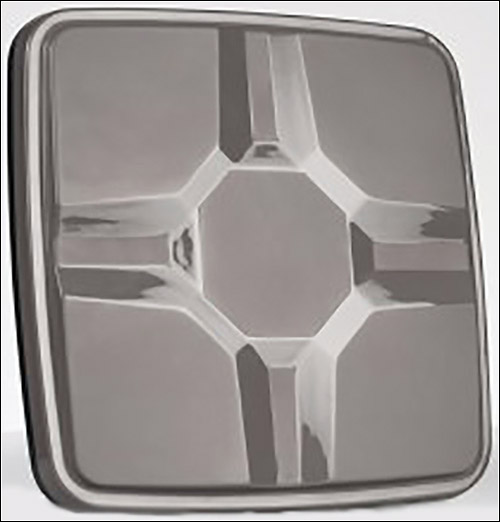The Fraunhofer Institute for Integrated Circuits IIS, a German research institution, is seeking companies to pilot its new Multibeam Antenna, which is designed to track the directions of tags as they pass an ultrahigh-frequency (UHF) RFID reader, and to capture tag reads more reliability than traditional antenna deployments in a crowded or environmentally unfriendly location. The antenna can be used with all standard UHF readers. It includes a remote-control interface or it allows for applications to be implemented on a user’s reader platform.
Fraunhofer IIS, located in Erhlangen, is an application-oriented research institution for microelectronic and IT solutions. It conducts research into audio media technologies, communications systems, X-ray technology, positioning systems, smart sensing technologies and supply chain services. The company says it designed the Multibeam Antenna as a replacement or alternative to existing UHF RFID installations in which multiple antennas are installed around a reader, often in a wide array to ensure accurate reads.
Some environments are more challenging for RFID technology than others. In spaces such as warehouses, busy retail locations or manufacturing facilities, for instance, ensuring that tags are read reliably can require a complex arrangement of readers and antennas. If a portal, or a series of portals, is installed at a warehouse dock door, for example, tags may pass quickly in large numbers and in multiple directions, and capturing each tag ID and identifying its location can thus be difficult.
Traditional installations consist of a reader with several antennas to detect a tag’s precise location and the direction in which it is moving. Common readers provide up to eight RF ports, each connecting an antenna with a fixed beam. A typical gate can be equipped with eight antennas, with four antennas installed at each side. To distinguish the direction in which tags are moving, the antennas needs to be mounted at some distance from to each other—typically several meters, says Mario Schühler, Fraunhofer IIS’s antennas group manager.
“Direction identification, in general, is not possible with antennas of fixed beams and common readers,” Schühler explains. For that reason, he adds, “moving direction can be roughly estimated [only] with complex installations.”
In other cases, readers operate with fewer antennas, but the results may be a reduction in read performance, especially if the environment in which tags are being interrogated is hostile. For instance, if tags were moving quickly past a reader (on a forklift, for example), the antenna would have a limited opportunity to capture each tag’s ID number. If the environment included hundreds of tags, Schühler says, and if the tags were attached near metal or containerized liquid, the effort would become that much harder.
Fraunhofer IIS began working on a solution to this problem in 2016. The result, the company reports, is an antenna that offers up to nine individual beams, fed to four individual antenna elements (transducers) by a feed network. This network provides the nine predefined signal constellations, which cause nine separate illuminations of the antenna elements. The illuminations differ in their phase distributions among the elements, making it a form of phased array with discrete illumination patterns.
With the multiple beams and four elements, the antenna can begin reading tags earlier (assuming a pallet will pass through the reader’s field, for instance), and finish reading later. Users can point beams to cover certain directions and areas. “That is,” Schühler says, “we widen the read area and can, therefore, extend the read period.”
In environments in which multiple gates are deployed and operated in parallel, the antenna allows the system to identify the specific gate through which goods pass. The antenna thus helps to prevent stray reads beyond the intended coverage area.
Using the Multibeam Antenna eases the installation of otherwise complex systems, according to Fraunhofer. Instead of installing eight antennas throughout a wide area, Schühler says, “The gate can be equipped with two Multibeam Antennas, one per side, without loss of performance.”
Fraunhofer intends to prove the technology in real-world environments from pilots, and the organization is currently seeking pilot users. The companies it seeks will preferably have been using UHF RFID systems, Schühler says, but have encountered some problems with their read reliability or directional understanding. “We want to deploy the antenna at the user’s facility,” he states, “and do tests in order to prove the performance of the antenna, and to benchmark it against existing solutions.”
Companies can retrofit their existing RFID readers with the Multibeam Antenna. The direction identification can be accomplished by the antennas using Fraunhofer software that is aware of the antenna’s characteristics for direction estimation. The software can run on a site’s server connected to the reader, or on the reader itself, provided that the device supports that software. The reader, therefore, does not require any additional firmware or software to estimate direction. If no direction identification is necessary, he adds, the deployment becomes easier, since the antenna can be operated in an autonomous mode without requiring a remote control interface.
Following the pilots’ completion, the company expects the antenna to be made commercial available during the fourth quarter of this year.



